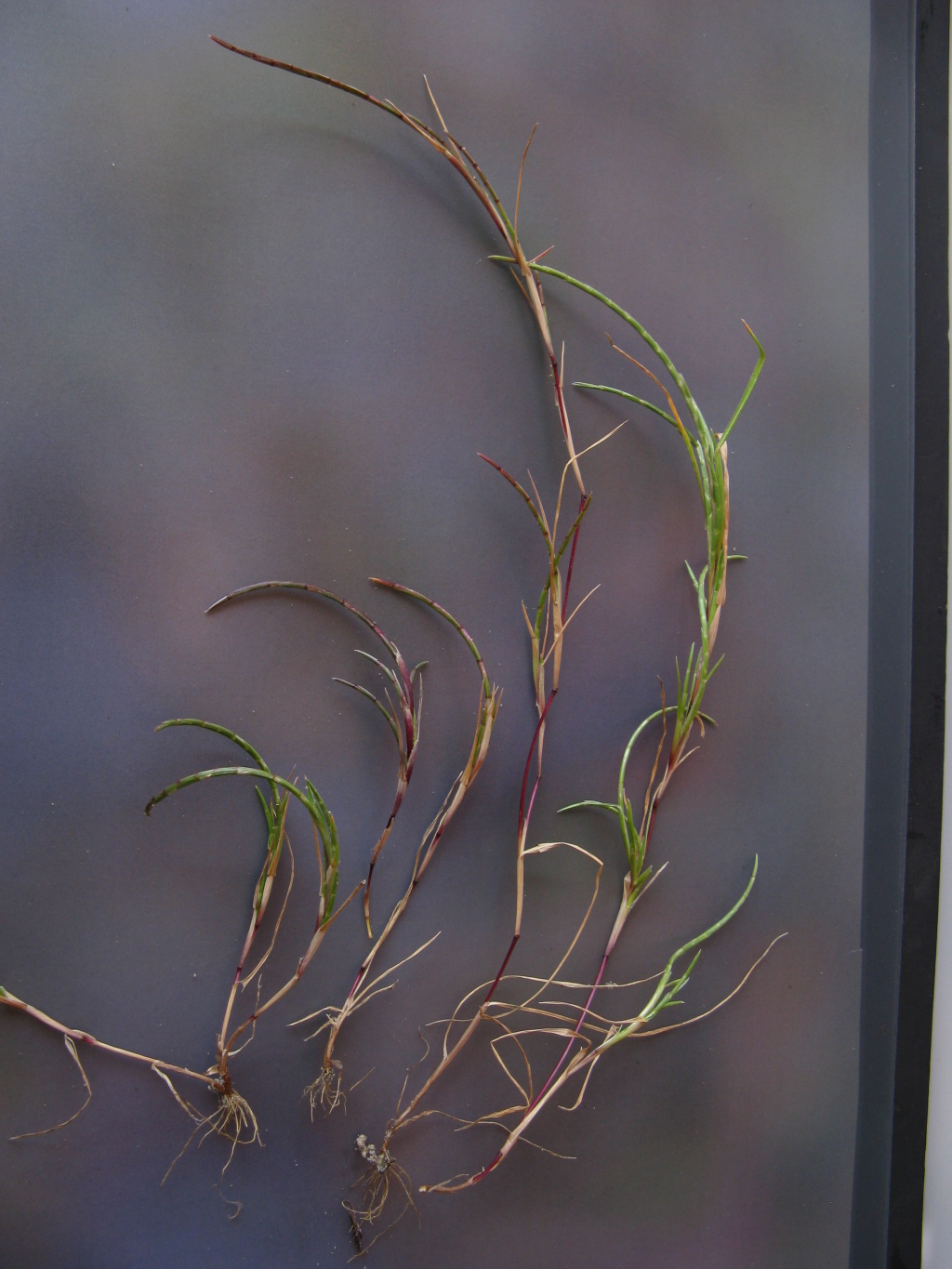Parapholis incurva
(L.) C.E.Hubb. Coast Barb-grassTufted, erect to decumbent, stems to 25 cm long. Leaves glabrous; blade flat or incurved, scabrous on upper surface, to 6 cm long and 2 mm wide, often reduced to short points on the inflated upper sheath; ligule minutely toothed, to 1 mm long. Spikes to 10 cm long, weakly to strongly curved, rarely almost straight, often purplish, usually many per plant. Glumes subequal, 4–5-nerved, 4.5–7 mm long, mostly slightly longer than internodes; lemma and palea thinly membranous, 1–2 mm shorter than glumes; anthers 0.5–1 mm long. Flowers Sep.–Nov.
LoM, MuM, Wim, GleP, Brid, VVP, VRiv, MSB, RobP, MuF, GipP, OtP, WaP, Gold, CVU, GGr, DunT, EGL, WPro, HSF, HNF, OtR. Also naturalised WA, SA, NSW, Tas. Indigenous to coasts of the Mediterranean region and western Europe. Primarily a grass of coastal salt-marshes and low sea-terraces, but becoming widespread on salted land away from the sea, particularly in the north-west.
Walsh, N.G. (1994). Poaceae. In: Walsh, N.G.; Entwisle, T.J., Flora of Victoria Vol. 2, Ferns and Allied Plants, Conifers and Monocotyledons, pp. 356–627. Inkata Press, Melbourne.
 Spinning
Spinning




